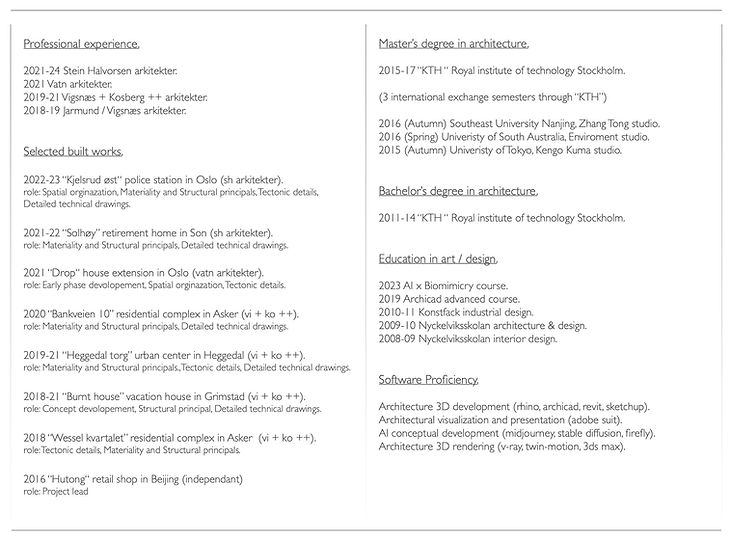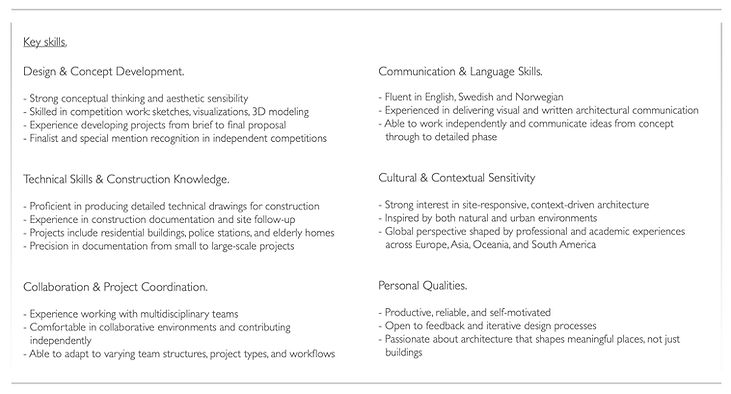
It is difficult to grasp what architecture truly is when we step outside established frameworks. Architecture reflects what is accepted—at least until we dare to question it. The challenge lies in dismantling what we know in order to discover something more intimate and authentic, rooted in what we ourselves are willing to stand for.
Architecture should fundamentally strive for harmony with its surroundings: with landscape, topography, and climate. It should be bound to its place, shaped freely by its context, unburdened by preconceived notions. What matters is not replicable objects, detached from environment, but site-specific and interwoven architecture that belongs wholly to where it stands.
Context must always serve as inspiration—whether through accessibility or detachment. From context arises innovation, guiding how materials are used and developed toward new possibilities. The tectonics of a building should embody the core idea of its concept, revealing the very construction of architecture itself.
Material choices should ideally be local, even drawn directly from the site. The tectonic expression should remain honest and exposed, with as little concealment as possible—free from unnecessary coatings, treatments, or finishes—so as to reduce climate impact and unnecessary processes of production.
Concepts should emerge from context and seek to challenge what we take for granted. Form must never dictate architecture; rather, form should be the natural consequence of architectural creation. Architecture should grow from within, generating atmosphere and ambience independent of the final form we may “discover.”
Architecture is not an object to be observed, but an experience to be encountered in dialogue with the subject. What exists within is more significant than the outer shell that encloses it. When we set aside preconceived ideas of design and allow the essence of place to matter more than our desire to impose upon it, architecture can become authentic.
We are part of place, of nature, of climate. We possess subtle, sensitive ways of perceiving the world around us. To live in balance and harmony with this is a condition worth striving for.
Yet as we evolve, our desires are often forced into frameworks defined by the demands of others. These structures strip away our sensitivity, dulling our drive for discovery. We risk becoming skeletal figures, reproducing only what has already been established. In practice, architecture too often succumbs to industry: regulations dictate most of what we are permitted to draw and build. What remains, however, is our inner sensitivity. If we anchor this to place, we open the possibility of creating conscious, credible architecture—architecture that naturally finds its role within a greater whole and can exist only in one specific location.
Regardless of its final form, such architecture has the power to move us inwardly, to delight those who experience it.
This approach produces architecture that is humble, conscious, and can only exist in one specific place…


